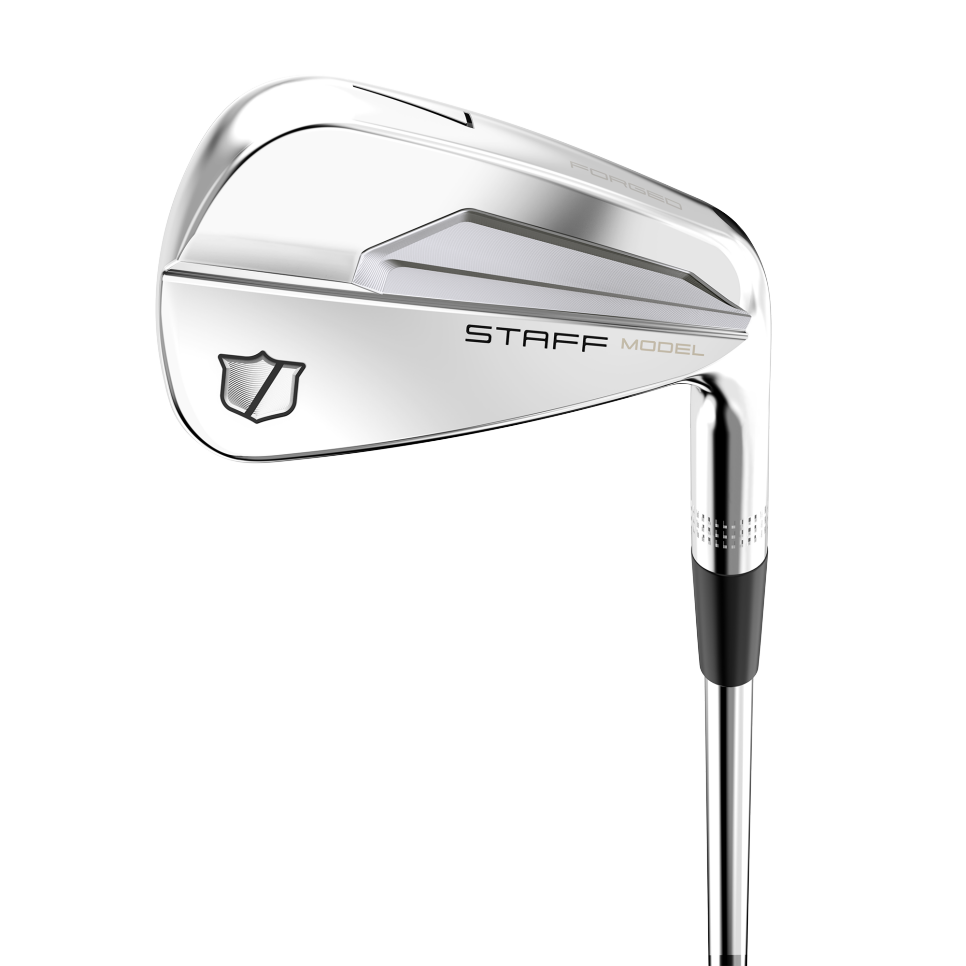What you need to know: Wilson Golf has consistently evolved its approach to players irons, resulting in a string of well-received models, most recently the Staff Model CB and Staff Model blades. Both receive an upgrade; however, the primary idea was to do so as a family of irons rather than individual models, making it easier to blend sets as better players are often inclined to do. That meant both irons feature common lines and weighting, similar aesthetic details and parallel performance attributes. The face milling on both allows for longer ball-to-face contact for more consistent spin.
Pricing: Both the Staff Model CB and Staff Model Blades will sell for $1,200 for a seven-piece set in steel (4-PW with 2- and 3-irons available through custom order).
3 Cool Things
1. A feel that is fluid. Aficionados instantly will recognize the bore-thru “Fluid Feel” hosel, which dates back to Wilson’s heyday in muscleback irons. The hosel design takes weight out of the hosel, allowing the center of gravity to be moved closer to face center, something better players will appreciate.”
“Throughout the development process, we engaged our Wilson Advisory Staff across the tour so that we could deliver irons that will make them better shot shapers,” said Bob Thurman, global general manager of golf and VP of R&D at Wilson. “Three-time major winner Padraig Harrington is a prime example as he put the new Staff Model CB irons in play for the first time at the TimberTech Championship this past November and won by seven shots.”
2. A cavity-back anyone can play. In the long and mid irons, tungsten weighting is positioned in the low toe area. Doing so accomplishes two things: It boosts the moment of inertia to help mitigate the effect of mis-hits while allowing the face to stay open longer, helping to eliminate the low, left shot.
Milling on the club face, consistent with the Blade offering, along with a new face blast allows for longer ball-to-face contact resulting in more consistent spin and increased stopping power.

3. Precision tools. Muscle-back blades are fairly difficult to hit for most everyday players. That’s not to say, however, that the old butter knives don’t have a place in the game. With that in mind, Wilson is introducing its latest Staff Model balde irons—a forged, 8620 carbon-steel muscleback blade iron.
So why would anyone want to play a muscleback blade when there are plenty of more forgiving options available? The reason is part look, part performance. Although most players irons today have a hint of a cavity-back (like its sister CB iron) that provides just the right dash of easy, some players simply can’t stomach the look of a slightly larger clubhead or beefier topline that often comes with a cavity-back iron. Others prefer the higher center of gravity found in most pure blade irons, allowing for lower-flighted shots into greens with short irons. Shot shape also plays a role. Today’s balls spin far less, making it easier to simply aim at the flag and fire, especially with a perimeter-weighted cavity-back. For those wishing to maneuver the ball, however, blades offer a greater opportunity to do so.
For sound, Wilson created a lower first natural mode for a deeper, softer sound. This was achieved through face thickness and blade height. The blades offer similar toe weighting, fluid-feel hosel and face milling as the CB. “We wanted these irons to be an immediate family rather than cousins,” said Thurman. “If you want a blended set, this makes it easier. The lofts, shafts, grips are all the same.
This article was originally published on golfdigest.com



